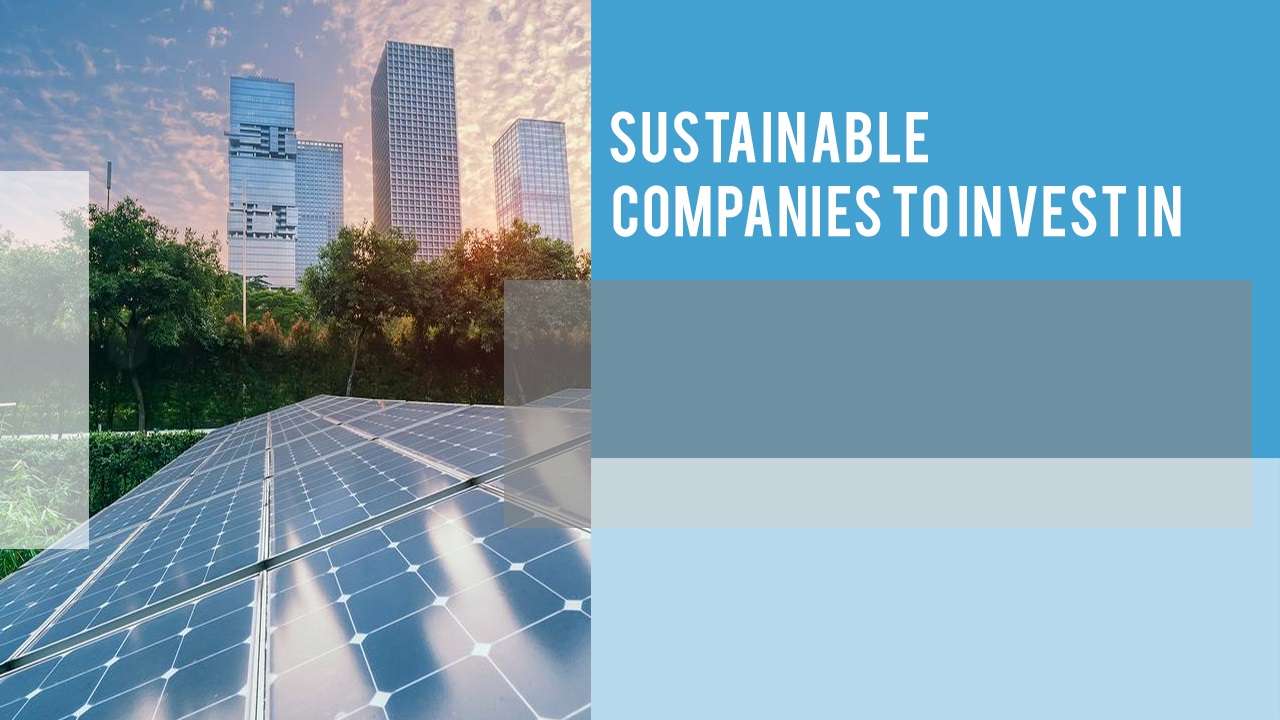Let’s dive right in—you need the scoop on the Latest Developments in Sustainable Investing. Gone are the days when “going green” meant just recycling your soda cans. Today, it stands for a seismic shift in how we invest for the future. Think bigger profits, and a healthier planet. I’ll break it down, show you the rise of ESG trends, and give you a clear path for jumping onboard.
Whether it’s spotting the best-in-class ESG scoring systems, getting to grips with new reporting standards, or eyeing up the big bucks in green bonds, you’re in the right place. Ready to see your portfolio bloom while the earth breathes easier? Stick with me. We’re not just investing; we’re investing with impact and intent. Welcome to a world where your money moves matter. Let’s get started on building that greener future, one smart investment at a time.
The Rise of ESG Investment Trends in 2023
Adapting to ESG Scoring Systems
The world is changing fast, and so is investing. We know it’s not just about money now. It’s also about our planet and people. This year, ESG investment trends are big news. More and more folks want to put their bucks where it helps the earth and everyone on it.
So, what does ESG stand for? It’s Environmental, Social, and Governance. This means we look at how green a company is, how it treats people, and how it runs its business. And then we give it a score. The better the score, the better the choice for folks who care about these things.
Think of it like a report card for companies. Just like kids in school want to get good grades, companies want to get good ESG scores. It means more people will want to invest in them.
These scores are not just nice to have. They are a must-have. Let’s be real. Our world faces big problems, like warming temps and folks not being treated right. The companies that do well on ESG can help fix these problems.
To stay ahead, companies have to up their game. This means cleaner business ways, better care for workers, and strong chiefs who play fair. And for investors? It offers a way to make money while doing good.
Embracing ESG Reporting Standards and Integration Techniques
Now, let’s talk about how we mix ESG in our money plans. It’s called integration. Sounds tricky, but it’s really about making smart choices.
First up, we have ESG reporting standards. These are like the rules of the game. They tell companies how to show us what they’re doing on ESG stuff. And this helps us pick where to invest.
But the cool part? It’s not just about picking this stock or that bond. It’s about putting together a mix that’s right for you and good for tomorrow.
We also have tools to track how ESG choices do over time. These tools keep a close watch to make sure the green is staying green. This helps give us peace of mind that our cash is making a difference.
So, what’s the takeaway? ESG is here to stay, and it’s getting bigger and better. From solar energy to schools that help all kids learn, this is money that moves us ahead.
And don’t forget, these choices matter. We’re not just making cash. We’re making a mark on the future. It’s a win-win. And that’s something we can all get behind.
Impact Investing and Socially Responsible Funds: Building a Better Tomorrow
Analyzing the Growth in Impact Investing
Watching impact investing grow recently has been like seeing a plant shoot up after rain. Every year, more and more cash flows into businesses and projects that aim to do good for people and the planet while also making money.
How fast is impact investing growing? Very fast. By 2023, impact investing has reached new heights. More of us want to see our money make a real-world impact, beyond just the profits. So, what’s driving this? Folks are more aware and care more. They want to fix social and environmental issues through smart investing.
Climate change is a big deal, no doubt. That’s why so much money is going towards efforts and companies that help cool down our earth. Investment in clean technology and carbon offset projects is getting stronger each day. Investors are not only doing good; they’re also doing well financially.
Evaluating Socially Responsible Funds for Sustainable Futures
Now, let’s talk about socially responsible funds. These funds pick stocks and bonds from companies that value the earth, treat people fairly, and run a tight ship. Investors are asking, “Are socially responsible funds good to invest in?” The answer is a solid yes. They’re getting more love because they line up with what’s right.
People dive into socially responsible funds because they align with their values. They sleep better at night knowing their money is doing the right thing. And yes, they’re making money, too. These funds are a hit because they look at long-term value, not just quick bucks.
Choosing the right fund is like picking the perfect apple from a tree. Investors look at ESG investment trends and the track records of funds. They want to see that these funds are true to their word and actually make a positive dent on the earth and in society.
As for the bottom line, here’s something neat: investing in good causes doesn’t mean kissing good returns goodbye. ESG scoring systems show that companies that mind their manners with the planet and people often do just as well, if not better, than others. And investors of all sizes, from big-shot firms to people like you and me, can jump right in.
Green finance innovation, ESG-focused venture capital, and renewable energy investment funds also join the party. They help cut the cash flow to dirty energy and boost the goodies like wind and solar power. Change isn’t just coming; it’s here, and it’s powered by people putting their dollars where their hearts are.
In the end, the point is simple: money talks. Where we put it can paint our future green and grow a garden of good. And yes, it can still grow our savings at the same time. That’s what I call a win-win for everyone and our beautiful planet.
Financing the Green Revolution: Renewable Energy and Green Bonds
Expanding Renewable Energy Financing
Renewable energy is our future. To save our planet, we need clean power sources. Wind, sun, and water can give us this power. People everywhere are starting to put their money in these clean energy sources. Why? Because they know that our world needs it. They also know that this kind of investment can grow. Now, big companies and regular people can help pay for renewable energy projects.
When we talk about renewable energy, we think of solar panels and wind turbines. These need money to be built. Banks, investors, and governments are all vital players. They give the money needed to make these projects real. For instance, green bonds are a super way to pool cash for clean energy.
You might ask, “What are green bonds?” They are like a promise. When you buy a green bond, you lend money to a project that helps the Earth. Later, they pay you back with interest. It’s a win-win for you and for the planet.
The Evolution and Significance of Green Bonds
Green bonds aren’t old news. They started in 2007. Back then, they were new and few. But now, lots of people want to buy them. Why? Because they let people make money while doing good. Big organizations, like the World Bank, use green bonds to fund earth-friendly projects.
These bonds have rules. The project must help nature or cut pollution. Investors get reports showing how their money is helping. This builds trust and keeps things clear. Green bonds help fund giant wind farms in the ocean and big solar fields in the desert. They also help cities use less energy and clean the water we all need.
What started as a rare choice is now a top pick for folks who care about where they put their money. It’s not just about the good feels. It’s smart business, too.
People are now looking deep into where they put their money. They check out ESG factors – that’s short for environmental, social, and governance issues. Money put in companies that care about these things tends to be safe and grow. So, what’s good for Earth is good for your wallet, too.
Fast forward to today, and you’ll see green bonds are booming. We’re talking billions of dollars here. And these bonds are set to grow even more. As the world wakes up to climate change, green bonds could be key. They offer a concrete way to take money and use it for a cleaner, greener future.
Every dollar put into green bonds pushes us closer to a world where clean air and water are for all. It’s an exciting time to use your money as a force for good. The green revolution is not just coming; it’s here, powered by folks who understand that the real profit is a planet we can all share and enjoy.
Implementing Strategic Sustainable Investment Approaches
Aligning Investments with UN Sustainable Development Goals
Investing with a purpose is not just good for the world. It’s good for business too. Some call it “sustainable investing.” It’s a way to make money and do good. Yes, you can have both!
First, what are the UN Sustainable Development Goals? They’re a call to action. They want to end poverty, protect the planet, and bring peace and prosperity to all by 2030. So how do we use these goals in investing? By making sure our money helps reach these goals.
Now, sustainable investment strategies are key. These strategies mean picking investments that help these goals. They’re about more than money—they’re about our future. Imagine investing in a company that makes clean energy. You’re helping the planet and could also see your investment grow.
Or consider this—there’s a new trend: ESG-focused venture capital. This means that funds go to new companies that care about the environment, social issues, and good rules for how they run. Think green startups or firms that create new ways to clean water. This is big because it means your money backs innovations that could change the world.
Let’s not forget green bonds. These bonds raise money for eco-friendly projects. When you buy green bonds, you lend money to these projects. And here’s the deal—you get your cash back with interest over time. But the real win? You’re part of funding a greener future.
So, what’s been happening with these ideas lately? Well, ESG investment trends in 2023 are hot. More people want their investments to reflect their values. And the good news keeps coming. Impact investing growth is on the rise. That means more money is going towards making a positive difference.
What can we take away from all this? Simple. When we align our investments with the UN goals, we help create the world we want to live in. We’re talking less poverty, cleaner air, and rights for all workers. And yes, this can be good for your wallet too.
Fostering Innovation in Green Finance and ESG-Focused Venture Capital
Money is power. Where we put our money can change things. It can bring new ideas to life. It can make our air clean and our cities green. Green finance is about that—it’s about using money for our planet’s health.
We look now at clean technology. It’s tech that fights climate change. Investing in clean technology means backing up big ideas. Think electric cars, solar panels, or new ways of farming that don’t hurt the earth. When we put our money there, we push for a future that’s safer for all of us.
ESG scoring systems are tools that help us. They tell us how good a company is for the environment, society, and how it’s run. A high score can mean the company cares a lot about these things. We use these systems to pick the best companies to invest in.
And there’s more. Shareholder activism is another tool. This is when investors use their power to make companies better. They may ask a company to cut down on pollution or treat workers better. And companies listen because these investors own parts of the company.
Now, what’s the next step for us? Keep up with ESG reporting standards and ESG integration techniques. It means we always check if the companies we invest in stay true to their word on taking care of our world.
In the end, it’s about smart choices. By picking the right places to put our money, we can all win. We get profits while we help the planet and its people. That’s what makes sustainable investing a smart move for a greener future.
In this post, we explored how ESG trends shape 2023’s investment world. We saw the need to adapt to ESG scores and the importance of clear ESG reporting. We dug into the rise of impact investing and how funds with a social focus build a brighter future.
We also looked at financing the green shift. Money is pouring into renewable energy, and green bonds are key. Smart, ethical investments line up with the UN’s big goals, sparking new ideas in green finance and ESG venture capital.
To wrap up, these trends are not just about money—they’re about our future. Smart investors are now also wise guardians of our planet. Let’s keep learning and investing in a world where everyone and everything can thrive.
Q&A :
What are the newest trends in sustainable investing for 2023?
Sustainable investing continues to evolve rapidly, driven by heightened global environmental awareness and investor demand for socially responsible investment opportunities. Key trends include an increase in ESG integration across asset classes, the rise of impact investing in mainstream portfolios, and the proliferation of sustainability-themed investment products. Investors are also emphasizing climate change mitigation, circular economy initiatives, and the United Nations Sustainable Development Goals (UN SDGs) as critical factors in investment decision-making.
How are technological advancements impacting sustainable investing?
Technological advancements are playing a pivotal role in shaping sustainable investing. Innovative technologies such as artificial intelligence (AI) and big data analytics are enabling more nuanced analysis of ESG (Environmental, Social, and Governance) factors, contributing to better-informed investment decisions. Blockchain technology is improving the transparency and traceability of sustainable practices within supply chains, thereby reassuring investors of the authenticity of sustainable credentials. In addition, green technologies, including renewable energy and sustainable agriculture, are becoming increasingly attractive investment targets due to their potential for high growth and positive environmental impact.
What role do regulatory changes play in the growth of sustainable investing?
Regulatory changes are significantly influencing the trajectory of sustainable investing. Governments and regulatory bodies around the world are introducing frameworks and guidelines that promote transparency and accountability in ESG reporting. For instance, the EU’s Sustainable Finance Disclosure Regulation (SFDR) and the increasing adoption of the Task Force on Climate-related Financial Disclosures (TCFD) recommendations are pressuring companies and asset managers to disclose their sustainable practices and risks more clearly. These policies are encouraging the development of a more standardized and rigorous approach to sustainable investing, making it more accessible and trustworthy for investors.
Can sustainable investing generate competitive returns?
The debate over whether sustainable investing can lead to competitive returns has been ongoing. However, recent evidence suggests that incorporating ESG principles does not necessarily mean sacrificing returns. Many studies have found that sustainable funds can perform on par with or even outperform their traditional counterparts in the long term. This is partly due to the fact that companies with strong ESG profiles may be better positioned to navigate social and environmental challenges, leading to reduced risks and potentially enhanced profitability.
How important is shareholder engagement in sustainable investing?
Shareholder engagement is increasingly recognized as an integral component of sustainable investing. Investors are using their influence to encourage companies to adopt better environmental, social, and governance practices. This is achieved through shareholder resolutions, direct dialogue with company management, and collaboration with other investors to amplify their impact. By actively engaging with companies, investors can drive positive change and ensure that their sustainable investing goals are being met.






